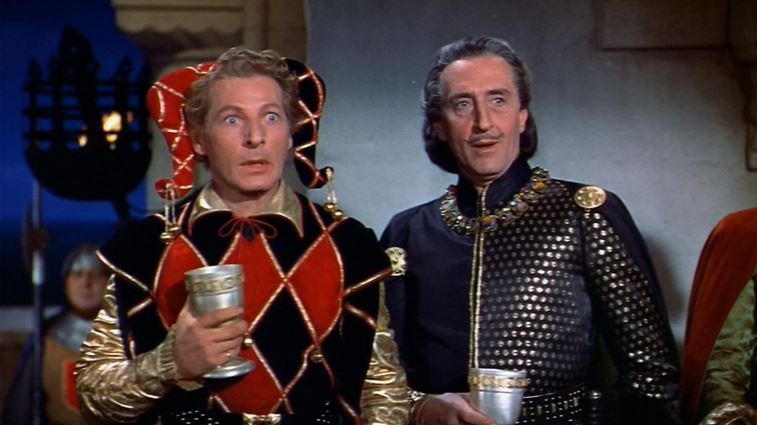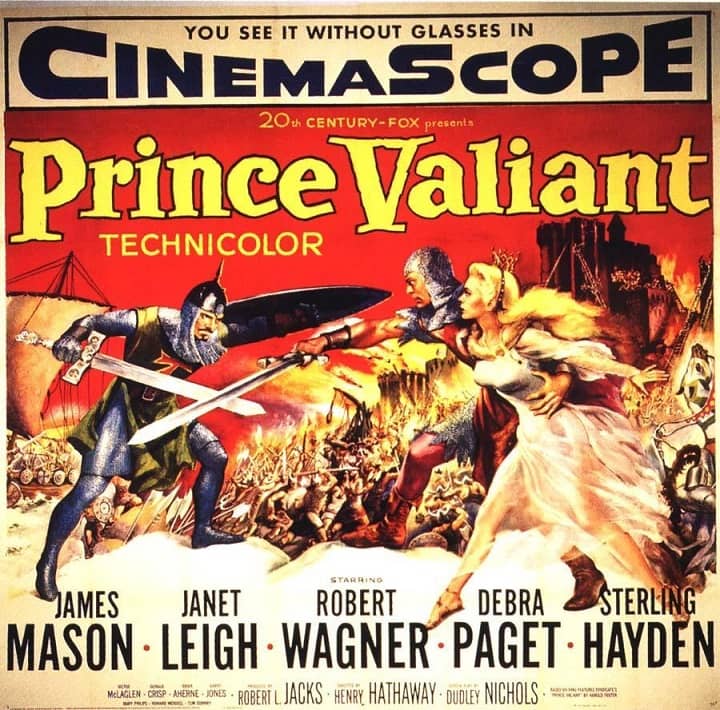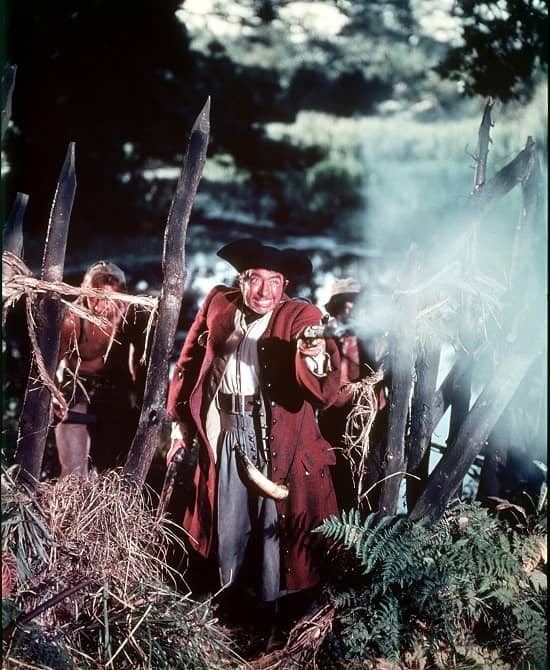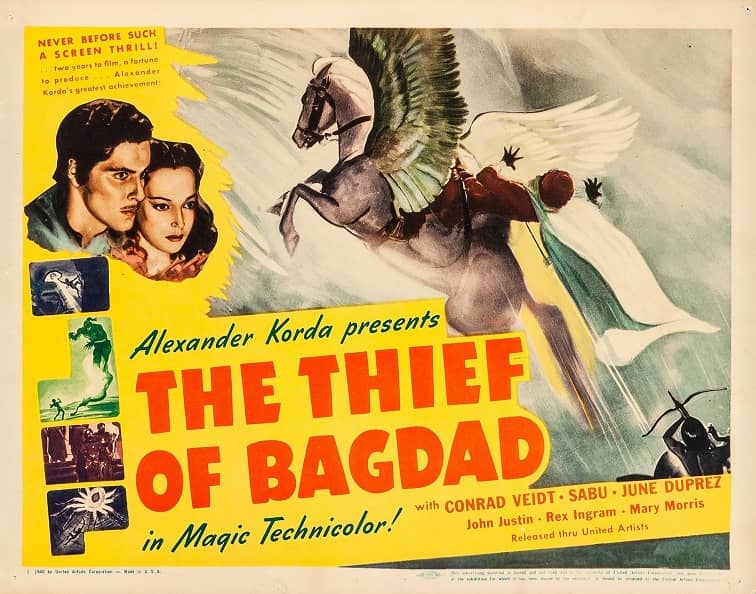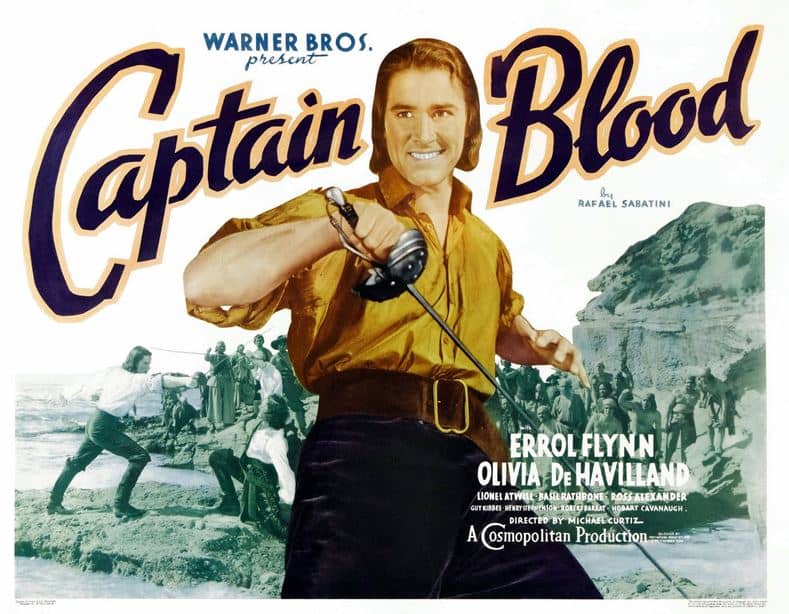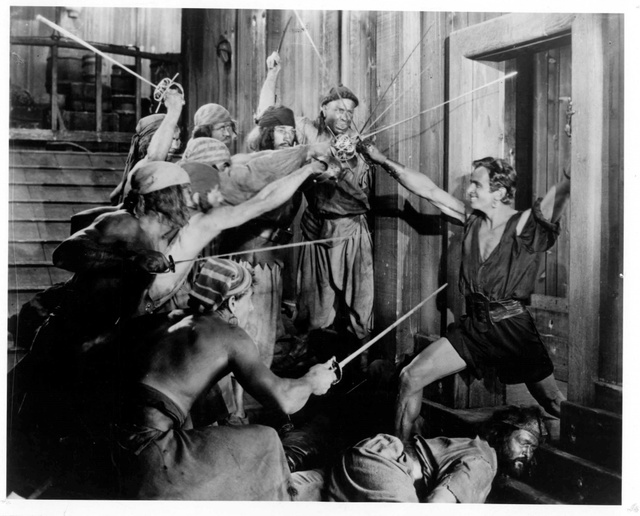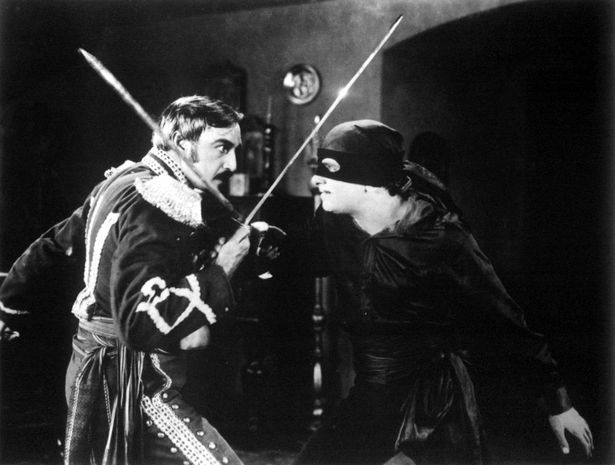Ellsworth’s Cinema of Swords: Laughing Cavaliers
The Court Jester (Paramount 1956)
Swashbuckler heroes tend to be boisterous and aggressively cheerful, embracing whatever life throws at them, not reacting so much as over-reacting to every joy and challenge, happy to be outside the constraints that keep normal folk like us from picking up apples in the grocery by impaling them on the points of our swords. Swashbuckler films often have comic overtones because it fits the character of their devil-may-care protagonists. And some swashbuckler movies take the plunge into outright parody. Here are two of the latter, plus an immediate predecessor that helped pave the way.
The Flame and the Arrow
Rating: ****
Origin: USA, 1950
Director: Jacques Tourneur
Source: Warner Bros. DVD
Burt Lancaster burst onto the Hollywood scene in 1946 playing a tender tough guy in The Killers, a dark film noir based on a Hemingway story, and he soon earned a reputation for excelling at edgy, dramatic roles. But before Hollywood, and before his service in World War II, Lancaster had been… a circus performer. In the 1930s he was one-half of Lang & Cravat, a comical acrobatic act with his diminutive partner and lifelong friend Nick Cravat, who, as part of his shtick, never said a word, leaving all the snappy patter to Lancaster.
